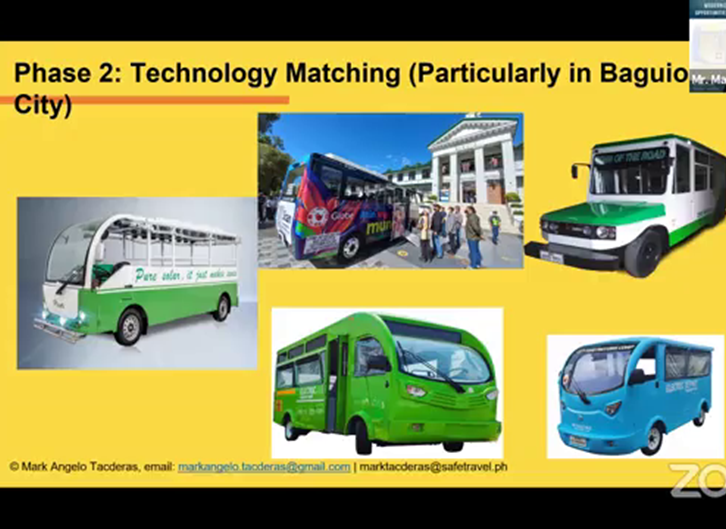Why Choose Transit Advertising Philippines for Your Brand name
Why Choose Transit Advertising Philippines for Your Brand name
Blog Article
Understanding the Function of Transportation Advertising And Marketing in Enhancing Brand Visibility and Customer Involvement
Transit marketing has become a pivotal element in the marketing landscape, using special possibilities for brands to elevate their presence and involve customers efficiently. With the capacity to reach a diverse and restricted audience during their daily commutes, these advertising approaches are not merely concerning visibility; they are about creating meaningful connections with prospective consumers. As we check out the complex benefits and cutting-edge approaches within transportation marketing, it becomes important to think about just how these elements jointly influence consumer understanding and behavior, questioning concerning their long-term effect on brand name loyalty.
Interpretation of Transportation Marketing
Transit advertising refers to the technique of promoting items, services, or brand names with ads placed in and around mass transit systems. This kind of advertising encompasses a selection of positionings, consisting of posters on buses and trains, digital displays at transit stations, and covers on the exterior of automobiles. It aims to reach a diverse audience, profiting from the high foot traffic connected with public transportation.
Transit advertising is tactically positioned to catch the interest of travelers, that typically invest significant time waiting or traveling. By incorporating ads into the daily routines of individuals, brand names can create a long lasting perception and foster brand acknowledgment. The medium is particularly efficient in city atmospheres, where mass transit is a key setting of travel.
Furthermore, transportation marketing can promote localized targeting, permitting businesses to reach specific demographics based upon transportation routes and terminal areas. As metropolitan populations grow and the usage of public transport rises, this advertising and marketing approach has acquired prominence as a vital part of integrated advertising and marketing approaches. The dynamic nature of transit advertising, incorporated with its capability to engage customers in a restricted setting, emphasizes its significance in modern advertising and marketing techniques.
Advantages of Transportation Advertising And Marketing
The efficiency of transportation marketing hinges on its ability to provide a wide range of benefits to brand names seeking to enhance exposure and involvement. One of the main advantages is the considerable reach it supplies; transit ads can properly target varied demographics throughout metropolitan locations, getting to both commuters and pedestrians alike. This broad exposure dramatically enhances brand recognition.
Another benefit is the high frequency of perceptions. As transit cars take a trip along recognized routes and stop at numerous places, they create repeated direct exposure that strengthens brand name messages. This frequency fosters experience, which is essential in customer decision-making.
Transportation marketing is additionally affordable compared to other media platforms. Given its expansive reach and potential for high impressions, brand names frequently experience a reduced expense per thousand impacts (CPM), optimizing their marketing budget.
In addition, transportation ads can develop a feeling of neighborhood connection. By straightening with regional transit systems, brand names can reverberate with regional target markets and promote a feeling of regional pride. This localized technique enhances brand loyalty and engagement, making transit advertising and marketing an engaging choice for organizations intending to solidify their visibility out there.

Efficient Methods for Transit Campaigns
To make the most of the impact of transit campaigns, brands must leverage tactical planning and implementation customized to their target market. First, recognizing the group characteristics of the audience utilizing public transit is important. This permits brands to develop customized messaging that resonates with possible consumers.
Next, picking the best transportation mediums is crucial. Whether using bus covers, subway posters, or electronic screens, each medium has review distinct benefits that can improve exposure. As an example, vibrant visuals on bus wraps can stand out, while electronic advertisements can be updated regularly to mirror timely promos.
Additionally, incorporating a natural branding strategy across transit systems guarantees consistency and strengthens the brand's identification. Using remarkable taglines and eye-catching designs will certainly reinforce brand name recall amongst commuters.
Finally, timing is a key consider executing successful transit projects. Launching projects throughout peak travel hours or regional occasions can substantially increase visibility and involvement. By using these strategies, brands can properly harness the possibility of transit advertising, fostering greater recognition and link with their target audience. Inevitably, a well-executed transit project can drive considerable growth in brand name visibility and consumer engagement.

Determining Effect and Interaction
In evaluating the effectiveness of transit ad campaign, accurate measurement of effect and interaction is essential for brands looking for to optimize their marketing approaches. Metrics such as reach, regularity, and impacts supply foundational data to assess visibility. Assessing these factors aids identify the amount of possible clients are exposed to the ads during their day-to-day commutes.
Interaction can be further determined via read review customer interactions, such as site traffic, social media points out, and straight actions to calls-to-action featured in the advertisements. Utilizing tools like QR codes or special URLs can facilitate tracking of customer actions directly connected to transit projects. Studies and comments systems likewise offer as valuable techniques to collect qualitative data on consumer understandings and recall of the ad.
Moreover, advanced analytics and attribution models can correlate transportation exposure with succeeding purchasing habits, offering understandings right into the roi. By using an extensive approach that integrates qualitative and quantitative steps, brand names can establish a nuanced understanding of their transportation advertising and marketing impact. Ultimately, this data-driven strategy allows brand names to improve their campaigns, ensuring they reverberate successfully with target market and enhance total brand name presence.
Study of Successful Projects
Successful transportation advertising and marketing campaigns act as engaging instances of exactly how effective techniques can boost brand presence and involvement. Transit Advertising Philippines. One noteworthy situation is the "I Love New York" campaign, which changed the city's photo and attracted millions of visitors. By making use of subway advertisements, signboards, and bus covers, the project produced a strong, cohesive brand identification, leading to a significant uptick in tourist and neighborhood company patronage
Another excellent campaign is Coca-Cola's "Share a Coke" campaign, which leveraged transit marketing to customize the brand name experience. By featuring prominent names on promotional materials across various transit systems, Coca-Cola promoted a much deeper emotional connection with customers, motivating them to share their experiences on social media sites.
In addition, the "Got Milk?" project effectively made use of public transport ads Extra resources to reach a wide audience, reinforcing the message of the importance of milk in a balanced diet. The project saw a measurable boost in milk usage in target demographics.
These study illustrate that when implemented thoughtfully, transportation marketing can considerably improve brand name presence, foster customer engagement, and drive quantifiable outcomes, showing its vital duty in modern-day marketing methods. - Transit Advertising Philippines
Conclusion
To conclude, transportation marketing acts as an essential tool for enhancing brand visibility and promoting consumer involvement. By using strategically positioned advertisements within public transportation systems, brand names can properly reinforce and get to diverse target markets recognition via constant direct exposure. The implementation of targeted messaging and ingenious strategies further enhances the effect of transportation campaigns. Eventually, the capability to measure interaction and analyze effective study underscores the effectiveness of transit advertising and marketing in driving brand loyalty and customer interactions.
Transit advertising and marketing has actually emerged as an essential component in the marketing landscape, using unique chances for brands to raise their exposure and engage customers efficiently.In addition, transit advertising and marketing can promote localized targeting, allowing services to get to details demographics based on transportation paths and terminal areas.In evaluating the effectiveness of transit advertising and marketing projects, exact dimension of effect and interaction is necessary for brands seeking to enhance their marketing techniques.Effective transit marketing projects offer as engaging examples of just how effective techniques can raise brand exposure and interaction.In final thought, transit advertising offers as an essential tool for enhancing brand presence and promoting customer engagement.
Report this page